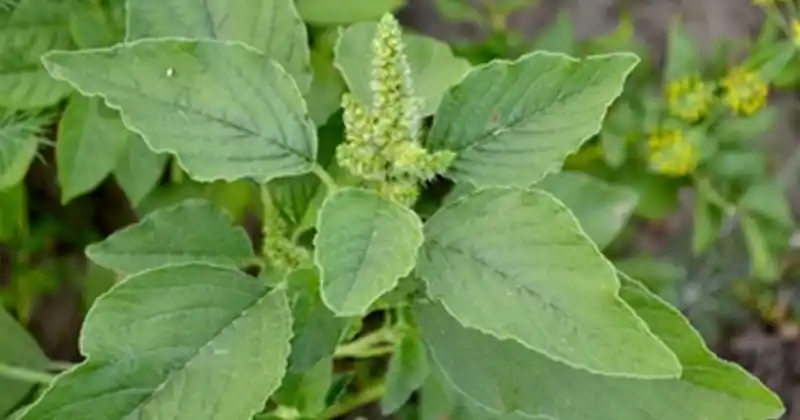Pigweed, often considered a pesky weed in many gardens, is actually a nutritional powerhouse with numerous health benefits. This plant, known scientifically as Amaranthus (which includes several species such as Amaranthus retroflexus), has been utilized in traditional medicine and cuisines around the world for centuries. Here’s a closer look at the impressive health benefits of pigweed and how you can make the most of this hidden gem in your garden.
Health Benefits of Pigweed
1. Nutrient-Rich Superfood
- Benefit: Pigweed is packed with essential nutrients including vitamins (A, C, E, and K), minerals (calcium, iron, magnesium, and potassium), and antioxidants.
- How It Helps: The high nutrient content supports overall health, boosting immunity, improving bone health, and aiding in cellular function.
2. Anti-inflammatory Properties
- Benefit: Pigweed contains compounds that have anti-inflammatory effects.
- How It Helps: Reduces inflammation, which can be beneficial for conditions such as arthritis and other inflammatory diseases.
3. Digestive Health
- Benefit: Rich in dietary fiber, pigweed supports digestive health.
- How It Helps: Promotes regular bowel movements and helps prevent constipation. The fiber content also supports gut health by fostering beneficial bacteria.
4. Blood Sugar Regulation
- Benefit: Some studies suggest that pigweed may help regulate blood sugar levels.
- How It Helps: May assist in managing diabetes by influencing insulin sensitivity and glucose metabolism.
5. Heart Health
- Benefit: Contains potassium and antioxidants which support cardiovascular health.
- How It Helps: Potassium helps in maintaining healthy blood pressure levels, while antioxidants help reduce oxidative stress that can lead to heart disease.
6. Weight Management
- Benefit: Low in calories but high in nutrients and fiber.
- How It Helps: Can aid in weight management by providing a filling, nutrient-dense option that helps control appetite.
7. Detoxification
- Benefit: Acts as a natural detoxifier.
- How It Helps: Assists in the elimination of toxins from the body, particularly through its high fiber content which aids in waste removal.
How to Use Pigweed
1. Culinary Uses
- Preparation: Young pigweed leaves can be used like spinach. They can be steamed, sautéed, or added to soups and stews.
- Recipe Idea: Pigweed Salad – Toss fresh pigweed leaves with a light vinaigrette, nuts, and fruits for a nutritious salad.
2. Herbal Tea
- Preparation: Dry the leaves and steep them in hot water to make a soothing tea.
- Recipe Idea: Pigweed Tea – Steep 1 tablespoon of dried pigweed leaves in 1 cup of boiling water for 10 minutes. Strain and enjoy.
3. Smoothies
- Preparation: Add fresh pigweed leaves to smoothies for a nutrient boost.
- Recipe Idea: Green Smoothie – Blend a handful of fresh pigweed leaves with fruits, yogurt, and a bit of honey for a nutritious drink.
4. Topical Applications
- Preparation: Create a poultice from crushed fresh pigweed leaves.
- Recipe Idea: Pigweed Poultice – Apply the crushed leaves to inflamed or irritated skin for relief.
Tips for Harvesting and Using Pigweed
- Harvesting: Gather pigweed when it is young and tender, as older leaves can become tough and bitter.
- Cleaning: Wash the leaves thoroughly to remove any soil or contaminants.
- Storage: Store fresh pigweed in the refrigerator for up to a week or dry the leaves for longer storage.
Cautions
- Identification: Ensure proper identification of pigweed, as some species can be toxic or cause allergic reactions. Consult local guidelines or experts if uncertain.
- Pesticides: Avoid harvesting from areas treated with pesticides or herbicides.
Conclusion
Pigweed, often overlooked as a mere weed, is a versatile and nutrient-dense plant with significant health benefits. By incorporating pigweed into your diet and wellness routine, you can make use of this garden gem and enjoy its diverse health advantages. Whether through culinary recipes, herbal teas, or topical applications, pigweed offers a valuable addition to a health-conscious lifestyle.
